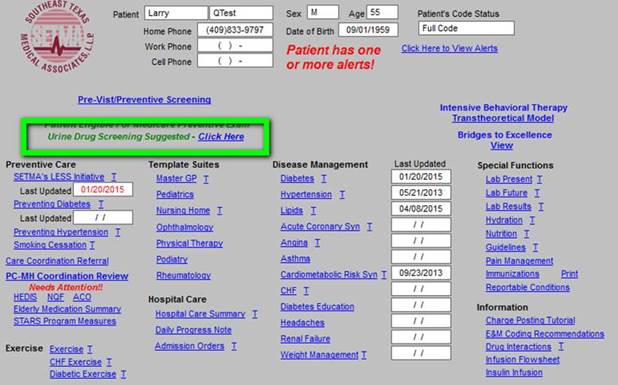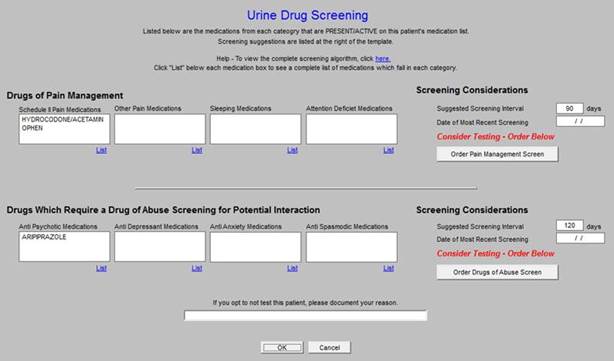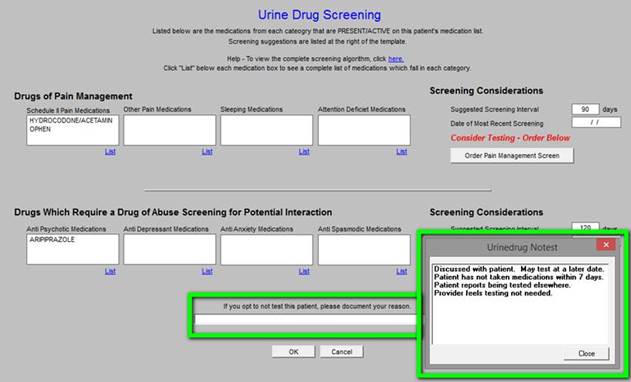|
October 22, 2015
Texas e-Prescribing of Controlled Substances Outreach Planning Group
Dear Colleague:
After reading the following article (http://www.theexaminer.com/features/commentary/fighting-prescription-drug-abuse), David Fulton, MS, PMP, Communication Lead, Medicaid- CHIP Health Information Technology, Health and Human Services Commission, invited me to serve on Texas e-prescribing of controlled substances (EPCS) Outreach Planning Group. I was delighted to accept. Subsequently, he has asked me to give a five-minute introduction to Southeast Texas Medical Associates’ involvement with ePCS on our first conference call this coming Tuesday. In addition to the following introduction to SETMA, we participate in the Dual Eligible Special Needs Plan (D-SNP), in regular Medicaid with plans to apply for Medicaid Stars in 2017.
The following is a brief introduction and description of SETMA’s efforts to comply with the requirements of the Texas Medical Board in regard to controlled substances and, as a Patient-Centered Medical Home (PC-MH), to give our patients excellent care with their participation.
- The following link is to SETMA’s Accreditations and Awards: http://jameslhollymd.com/Accreditations/pdfs/accreditations.pdf. These include the Texas Physician Practice Quality Improvement Award for Preventive Medicine and PC-MH and Ambulatory Care accreditation by The Joint Commission, the Accreditation Association for Ambulatory Healthcare, the National Committee for Quality Assurance and URAC. SETMA is the only practice in the United States accredited by all four organizations.
- SETMA is completing the seventh year of public reporting by provider name on over 300 quality metrics. This work is displayed at www.jameslhollymd.com at http://jameslhollymd.com/Public-Reporting/pdfs/public-reports-by-type.pdf.
- An explanation of the four seminal events which occurred in May, 1999 which changed SETMA forever: http://jameslhollymd.com/Your-Life-Your-Health/may-1999-four-seminal-events-in-setmas-history. These events included the enunciation of ten principles of how to build a practice and an electronic patient management system, which in 2009 was discovered to be the principles of PC-MH.
- SETMA’s letter to 105 area pharmacies about whether they are compliant with ePCS or not: http://jameslhollymd.com/Letters/pdfs/setmas-letter-with-inclusions-sent-to-105-pharmacies-about-eprescribing.pdf.
Systematization of Pain-Medication Management
In 2003, SETMA systematized pain-medication management with a tool which can be reviewed at: http://jameslhollymd.com/epm-tools/Tutorial-Pain-Management. Included in this tool is “SETMA’s refill policy” which states: “This represents SETMA's refill policy. This policy will print on the pain management document that will be given to the patient at the end of the visit. This policy states: “Under no circumstances will the medication be refilled:
- Prior to the renewal date at the prescribed dosage and frequency of use.
- Without the patient being seen in the office
- Without evidence of continuing need for medication
- On the weekend, evenings after hours, holidays or other times when your regular doctor is not available.
“The following reasons will not be accepted by any SETMA provider for an early refill of pain medication and/or medication with a significant potential for habituation:
- My medications were stolen.
- I only got half of the prescription filled.
- I dropped my medications into the sink, the sewer, the swimming pool or other watery body.
- I left my medication in my hotel on my trip.
- I missed my appointment.
- The neurosurgeon and/or the surgeon cancelled my appointment.
“Pain Medication Should Last - the date will automatically appear here which is a calculation of the number of pills given including refills and the maximum daily dose. This date will be the minimum time for a refill but does not indicate that the prescription should be refilled on this date. See explanation in number five below.”
State Medical Board Strengthens Requirements and SETMA Responds
SETMA has responded to the State Medical Board changes by adding another tool which recommends the frequency of drug screening for “Drugs of Abuse” and/or “Drugs which require a Drug of Abuse Screening for Interaction.” The steps of action with this tool are:
- When the patient’s electronic medical record is opened and the patient is taking drugs in either of these categories, an alert appears which states, “Urine Drug Screen Suggested.”
- Next to this suggestion is a button entitled “click here.” When this button is clicked, the following appears.
- Any drugs which have been prescribed for the patient and which should be periodically screen will appear in the appropriate box.
See the template below with the alert outlined in green. This does not mean that you must do a urine drug screen but that you should think about it and document why if you opted not to do one.

When the Urine-Drug-Screening tool is deployed, there are several reasons why a “suggested” drug screen alert might not be done, although many of those reasons are being shown to be invalid as we find that when we do the screen it proves the patient is not taking the medication.

If you opt not to do a drug screen, you can document your reason for not doing by click in the space which is outlined in green below and then selecting the appropriate reason in the second box below, also outlined in green.

SETMA is committed to complying with all State Board of Medicine requirements and to making sure that we use narcotics appropriately. These tools help us do that more efficiently.
SETMA and e-Prescribing of Controlled Substances (ePCS)
The following link describes the ePCS program in more detail: http://jameslhollymd.com/Your-Life-Your-Health/epcs-and-high-intensity-drug-trafficking-areas-hidta-program. In the August 20, 2015 Examiner, this column discussed SETMA’s addressing of the “conundrum for patient and provider use of pain medications”: see http://jameslhollymd.com/your-life-your-health/prescribing-pain-medications-a-conundrum-for-patient-and-provider. The “conundrum” is created by the tension which exists between:
- patients who need pain medications and other medications which are subject to abuse,
- providers who want to properly treat patients with these medications,
- an increasing abuse of pain medications and
- increasing demands by the Texas Medical Board upon physicians who prescribe these medications.
As discussed in the article reference above, when I started practicing medicine in 1973, urine drug screens were done to determine whether or not a person was abusing medications, whether illegal or prescription drugs. Today, urine drugs screens are used to determine whether patients are taking their prescription pain medications or whether they are diverting them to illicit sales and use. Some physicians have adopted a policy of not prescribing any controlled substances; however that is as problematical as over prescribing. The Texas Medical Board requires physician to provide treatment for legitimate chronic pain conditions while also requiring physicians to use those medications appropriately. This is the conundrum.
SETMA’s e-prescribing of controlled substances decreases the potential for abuse of pain medications and other potentially abused medications by:
- Eliminating the ability for duplication of prescriptions, refills and or number of pills prescribed for controlled substances,
- Creating an electronic record of all e-prescribed controlled substances,
- Requiring a provider-specific, unique six-digit number which changes every thirty-seconds for ePCS,
- Eliminating the ability for anyone but the prescribing physician from creating the e-prescription by:
Other elements of this program include:
- Requiring the physician to have a HIPPA compliant, secure, access-controlled electronic device for producing the 6-digit code. This device has a 12 digit code which is specific to the provider and which is hard-wired into the electronic device which produces the six-digit security codes.
- Requiring two-factor authentication for access to EMR for ePCS, which is first the physician’s personal, secure password for accessing the EMR for prescribing the controlled substances and
- Requiring the physician to have in their personal possession their smart card which is the second factor authentication for accessing SETMA’s EMR which is the platform ePCS.
e-PCS is also an important element of Patient-Centered Medical Home. The following two links give further information on SETMA’s e-PCS and controlled substances: http://jameslhollymd.com/Letters/tools-for-e-prescribing-controlled-substances-pain-management-policy-and-urine-drug-screens.
SETMA: How To Do e-Prescribing of Controlled Substances
The following is the link to the description of this proves: http://jameslhollymd.com/Letters/pdfs/ePCS-Instructions.pdf.
ePCS Instructions
ePCS = Electronic Prescribing of Controlled Substances
A couple of important notes:
- Only providers who have had ePCS access granted in NextGen may send controlled substance prescriptions. The provider’s smart card, PIN number and code from their SETMA iPhone are all required to send each prescription. Thus, nurses and unit clerks may not send the prescriptions on behalf of the provider.
- A provider may only renew and send a controlled substance that he/she originally wrote. You may not renew and send an ePCS prescription that was created by another provider. In this case, you would need to stop the previous prescription rather than renew it and then create a new prescription to send.
How-To send an ePCS prescription:
- All steps for creating and entering the ePCS prescription are the same as for any other medication entry into NextGen. The only difference in the process will be when you go to send the prescription electronically to the pharmacy.
- When you go to send a controlled substance you will see this additional section (circled below)of information at the bottom of the screen under “Authorization Required.”
- Note that not all pharmacies can receive ePCS prescriptions but most can. If the pharmacy is not capable of receiving the controlled substance electronically, this warning (circled below) will be displayed. In this case you would need to send the prescription by another method.
- In the “Password:” box you will need to enter the PIN number that is associated with your smart card.
- In the “Token Password” box you will need to enter the rolling code from the VIP Access app on your iPhone.
- Once you have successfully entered both the Password and the Token Password you will be able to click the “Send” button and the prescription will be routed to the pharmacy like all other electronic prescriptions.
James (Larry) Holly, M.D.
C.E.O. SETMA
www.jameslhollymd.com
Adjunct Professor
Family & Community Medicine
University of Texas Health Science Center
San Antonio School of Medicine
Clinical Associate Professor
Department of Internal Medicine
School of Medicine
Texas A&M Health Science Center
|